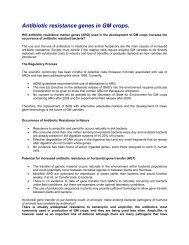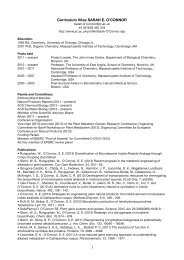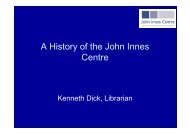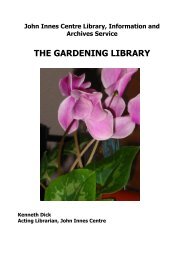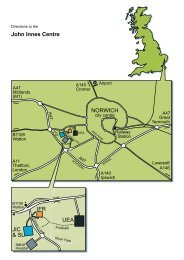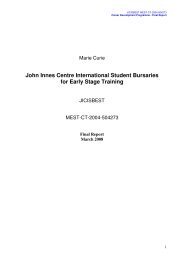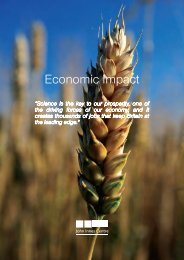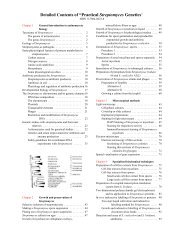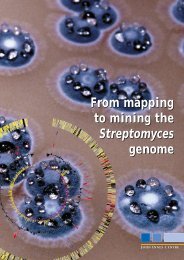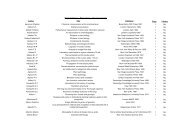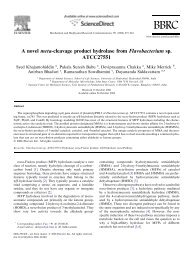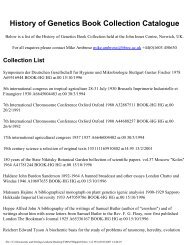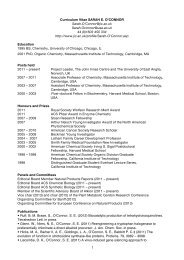1910s Timeline - John Innes Centre
1910s Timeline - John Innes Centre
1910s Timeline - John Innes Centre
You also want an ePaper? Increase the reach of your titles
YUMPU automatically turns print PDFs into web optimized ePapers that Google loves.
southwest of Hertford. The<br />
Trustees agree to purchase the<br />
mansion, farm buildings, stables<br />
and cottages and most of the<br />
land (together including 372<br />
acres) and the purchase is<br />
completed on 12 December<br />
1945. The new setting for the<br />
Institution is rather grand: the<br />
80-room mansion, framed by<br />
magnificent cedars, was built in<br />
1759 by William Baker and is set<br />
in a mature park designed by<br />
<strong>John</strong> Claudius Loudon. In recent<br />
years (until September 1945)<br />
the estate has been let to Dr<br />
Barnardo’s Homes.<br />
1945 Experiments on<br />
glasshouse design<br />
As ‘Curator of the gardens’, W J<br />
C Lawrence is charged with the<br />
task of designing the new<br />
glasshouses at Bayfordbury. He<br />
has to begin ‘with not a single<br />
piece of scientifically derived<br />
information on glasshouse<br />
design’. He starts to<br />
systematically monitor the<br />
effects of orientation,<br />
ventilation and heating systems.<br />
Model glasshouses are<br />
constructed at Merton to test<br />
orientation effects. This data<br />
helps Lawrence to formulate<br />
plans for the Bayfordbury<br />
glasshouses; these are prepared<br />
‘to make the whole new<br />
construction into a large<br />
experiment’. Topics for<br />
investigation include the<br />
behaviour and durability of<br />
glasshouse materials; efficiency<br />
of natural light and heat loss<br />
under different designs;<br />
variables affecting glasshouse<br />
climatology; efficiency of<br />
ventilation, and the effect of<br />
humidity.The Bayfordbury<br />
glasshouses are erected 1948-<br />
1950 and cover nearly an acre<br />
with glass. Two innovations,<br />
new to Britain, are included in<br />
them: forced ventilation with<br />
humidification, and automatic<br />
ventilators.<br />
The end of six years of blackout<br />
restrictions means that<br />
Lawrence is also free to<br />
experiment on artificial<br />
illumination (something he had<br />
tried unsuccessfully in 1936); he<br />
begins with a purchase of seven<br />
fluorescent lamps in December<br />
1946, the first purchase he has<br />
ever made for pure<br />
experimental work. These lamps<br />
increase the yield of the early<br />
crop of tomatoes by 55 per cent.<br />
Between 1947 and 1953 tests on<br />
fluorescent, mercury, neon and<br />
sodium light sources proceed.<br />
The practical results are<br />
published in 1952 and the full<br />
scientific results in 1954.<br />
See also:<br />
W. J. C. Lawrence, Catch the<br />
tide: adventures in horticultural<br />
research, London: Grower<br />
Books, 1980.<br />
W. J. C. Lawrence, Science and<br />
the Glasshouse, Edinburgh:<br />
Oliver and Boyd. 1948, 1950.<br />
W. J. C. Lawrence and A.<br />
Calvert, Artificial illumination of<br />
seedlings, J. I. Leaflet No. 11,<br />
Edinburgh: Oliver and Boyd,<br />
1952.<br />
W. J. C. Lawrence and A.<br />
Calvert, ‘The artificial<br />
illumination of seedlings’,<br />
Journal of Horticultural Science,<br />
29 (July 1954): 157-74.<br />
Page 42 of 91



